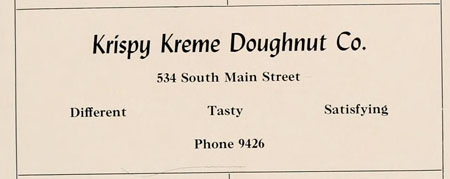On this day in 1945: North Carolinians take to the streets to celebrate V-J Day, marking the imminent victory over Japan and the end of World War II. In Raleigh, the crowd on Fayetteville Street is joined by a hook-and-ladder bearing a “Victory is complete” sign on its side. Within an hour, Gov. Gregg Cherry has ordered a statewide suspension of alcohol sales.
Month: August 2011
The Civil War’s worst investment tip?
“Confederate prospects for victory seemed brightest during the months after the Emancipation Proclamation, partly because this measure divided the Northern people and intensified a morale crisis in Union armies.
“Slave prices rose even faster than the rate of inflation…. A number of soldiers wrote home advising relatives to invest in slaves….The famous ‘boy colonel’ of the Confederacy, the planter’s son Henry Burgwyn [of Northampton County], who became colonel of the 26th North Carolina at the age of 21, urged his father to put every dollar he had into slaves. ‘I would buy boys & girls from 15 to 20 years old & take care to have a majority of girls ….’ he wrote. ‘I would not be surprised to see negroes in 6 mos. after peace worth from 2 to 3000 dollars.’
“Gettysburg cut short his life before he could witness the collapse of his dreams.”
— From “For Cause and Comrades: Why Men Fought in the Civil War” (1997) by James M. McPherson
Andy Barker, Mayor of Love Valley, Rides into Sunset
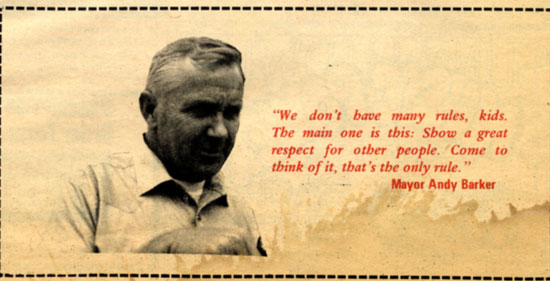 We just received word that Andy Barker, the founder and long-time mayor of Love Valley, died on Thursday. Love Valley is the Iredell County town designed to look like the Old West, a place that draws thousands of horse lovers each year. A quick search in our stacks didn’t yield any photos of Love Valley (although I’m sure we have some). But we did discover a program from a 1970 outdoor concert held in the town. The headline act was the Allman Brothers and the show is said to have drawn quite a crowd.(A quick update: I was working so quickly that I forgot that Lew Powell recently wrote a post about the Love Valley concert.
We just received word that Andy Barker, the founder and long-time mayor of Love Valley, died on Thursday. Love Valley is the Iredell County town designed to look like the Old West, a place that draws thousands of horse lovers each year. A quick search in our stacks didn’t yield any photos of Love Valley (although I’m sure we have some). But we did discover a program from a 1970 outdoor concert held in the town. The headline act was the Allman Brothers and the show is said to have drawn quite a crowd.(A quick update: I was working so quickly that I forgot that Lew Powell recently wrote a post about the Love Valley concert.
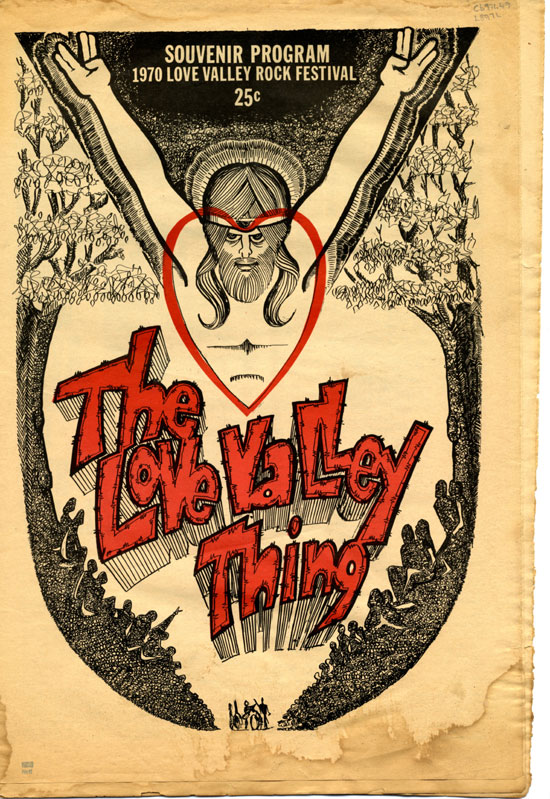
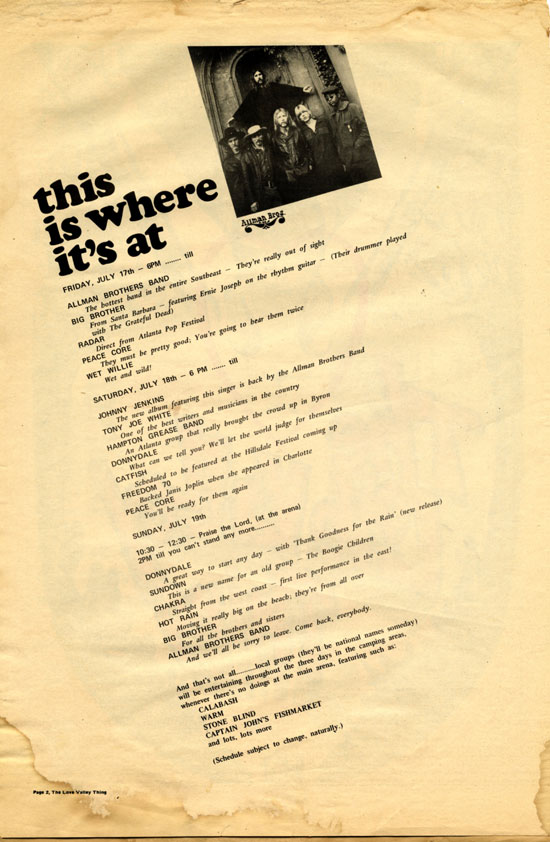
S&P upgrades link dump to junk status
— New York Times wowed by bottom-up perspective at Tryon Palace.
— Up for auction: corner cabinet built by Daniel Boone’s brother.
— Neo-Confederate non grata.
— Aboard a Norfolk Southern freight, the wave never gets old.
— He was present at creation of “boom chicka-boom.”
Creative Education at Asheville’s Plonk School
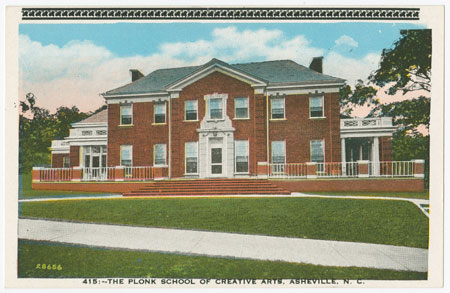
On Monday we added more than 300 postcards of Asheville to our North Carolina Postcards online collection. You’ll find some intriguing images of the Biltmore Estate and the Grove Park Inn. But the postcard that caught my attention is the one above. Mind you, I wasn’t drawn to it because of the photo. Rather it was the title that piqued my interest. Was the Plonk School of Creative Arts for kids? Or adults? What did they teach at such a school? What did the “creative arts” entail at the time the postcard was published?
The Plonk School of Creative Arts was the brainchild of sisters Laura and Lillian Plonk of Kings Mountain. According to a 1964 profile in The Asheville Times, Laura was a 1910 graduate of Lenoir-Rhyne College, did post-graduate work at the Boston School of Public Speaking and received a teacher’s diploma from the School of Expression, also in Boston. Her career included stints teaching speech in Kings Mountain and “oral English and Dramatics” at Wheaton College in Norton, Massachusetts and at Curry College in Boston.
As befitting someone with her education and experience, Laura Plonk placed a great emphasis on speech and drama at the Plonk School. The school’s 1961 catalog suggests that “all the faculties of a child or a young person–mind, body, voice, spirit–must be awakened, trained and directed before a well-provinced and a rich and distinctive personality can be compassed and achieved.” In addition to reading and basic math, preschool-aged children were tutored in speech, Dalcroze Eurythmics, group singing, poetry and French. Children in the primary grades continued studying all of the above and also had classes in “character and spiritual training” to help them with “better school and social behavior.” A similar curriculum was offered for junior high and high school students with the addition of classes in art, math, science and history (the full catalog is below).
One student of the Plonk School was writer Gail Godwin, who spent much of her youth in Asheville. In an interview with Asheville journalist Rob Neufield, Godwin relates that the fainting spells suffered by Jane in her novel The Odd Woman were based on her experiences at the Plonk School. The writer says she didn’t actually faint at the school.
What was true was, there was a school in Asheville called the Plonk School of Creative Art. It was run by two sisters, Laura and Lillian Plonk . . . I couldn’t stand it . . . For one thing, they tried to get our accents out of us so we wouldn’t speak like hillbillies. You’d have to say, “I never saw a purple cow.” Cow, not caih-ow.
Godwin’s mother, Kathleen, occasionally taught at the school. In a 1989 essay, the writer recalls that her mother “taught Drama or Poetry or Creative Writing, or whatever the autocratic Miss Laura Plonk, who thoroughly believed in Kathleen’s versatility, decided needed teaching that day.” Kathleen Godwin also taught at Asheville’s St. Genevieve’s Junior College, which had a grammar school tied to it. And it was to that school that the younger Godwin fled from the rigid speech lessons of the Plonk sisters.
The Plonk School began as the Southern Workshop, a program offered as a summer term in an Asheville public school in 1924. Five years later the sisters opened the Grove Park School. And in 1939, the Grove Park School and the Southern Workshop merged to become the Plonk School of Creative Arts. The school was at several sites. The building in the postcard above is at 1 Sunset Parkway. That site is now home to Zion Ministries Inc. We were unable to find a date for when the school closed. Laura Plonk died in March 1966 and Lillian died in June 1979.

PGA championships: once in a N.C. lifetime?
Early Krispy Kreme Ad
I found this ad in the back of the 1943 edition of The Lamp, the student yearbook from the Bowman Gray School of Medicine (now the Wake Forest School of Medicine). At the time, Krispy Kreme was just a few years old and still had just a single store on South Main Street in Winston-Salem.
Were the donuts really “Different,” as the ad claims? I don’t think anyone would dispute that they were tasty and satisfying.
Thomas Wolfe, a ‘great, obnoxious beast’?
“Thomas Wolfe, the novelist, has just taken an apartment at 865 First Avenue….Going down in the elevator the other morning, he was joined by a lady with a big police dog. The dog took an immediate liking to Mr. Wolfe, and began jumping up on him, and kissing him. Mr. Wolfe, who is only moderately fond of dogs, pushed this one away, whereat the lady spoke up sharply. ‘Wolfe!’ she said. ‘You great, obnoxious beast!’
“Being a gentleman, Mr. Wolfe made no reply, but he was terribly hurt. He spent the rest of the day wandering along the waterfront in the rain, bumping into warehouses and brooding, like a character in one of his own novels. However, the matter was cleared up when he returned home that evening. The elevator man explained that the police dog is named Wolf …. The lady… was bawling out the dog and not the novelist, whom, as a matter of fact, she rather admires.”
— The New Yorker, March 6, 1937
I’d be surprised if this Talk of the Town amusement wasn’t apocryphal. In fact, it almost predicts the Reggie Jackson (Eddie Murphy, et al.) urban legend of half a century later.
Homesteads may tumble, but memories unscathed
“In western North Carolina a folklorist found many old family homesteads empty and neglected, but often used for family reunions; what mattered was ‘the memory of the experiences within and the meanings attached to the homeplace…. not the walls, the roof and the foundation. [They] preserve stories about old houses better than they preserve the structures themselves.’ ”
— From “The Heritage Crusade and the Spoils of History” by David Lowenthal (1996)
All aboard the Popeye bandwagon
By 1930s standards, this pinback button represents quite an ambitious effort at cross-promotion by the Charlotte News and the Carolina Theatre, not to mention Paramount Pictures and King Features.
Popeye first appeared in newspapers in 1929, on screen in 1933, on fried chicken franchises in 1972 (although the chain claimed it had taken its name from Gene Hackman’s character in “The French Connection”).


